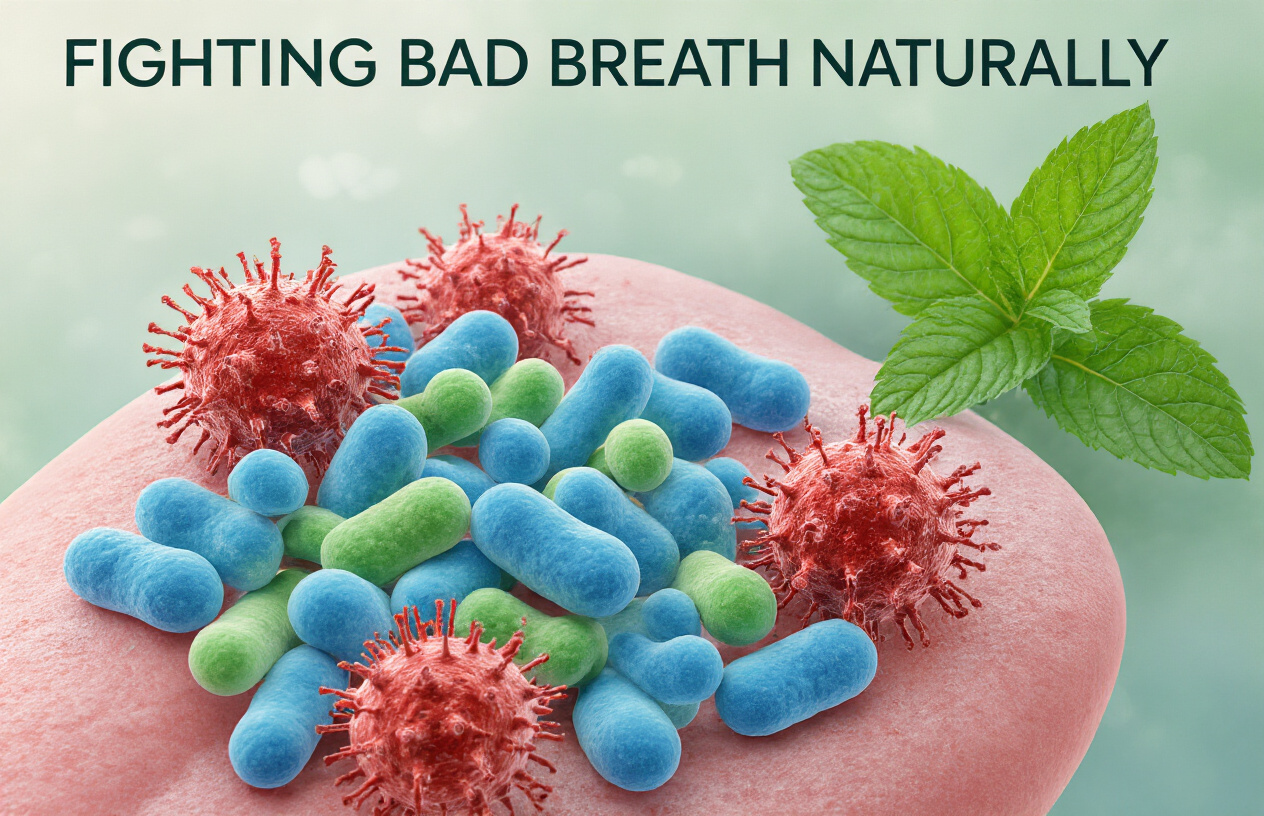
Ever woken up with morning breath so bad it could peel paint? You’re not alone. About 80 million Americans suffer from chronic halitosis, and most are fighting it completely wrong.
Brushing, flossing, and drowning yourself in mouthwash might actually be making things worse. Turns out, your mouth has its own ecosystem of good bacteria that protects against the stinky stuff.
The key to fresh breath isn’t killing everything in sight. It’s about supporting oral probiotics that naturally fight bad breath from the inside out.
And here’s the kicker – that minty fresh feeling from commercial products? It’s just a temporary mask hiding a bigger problem underneath.
Understanding the Oral Microbiome
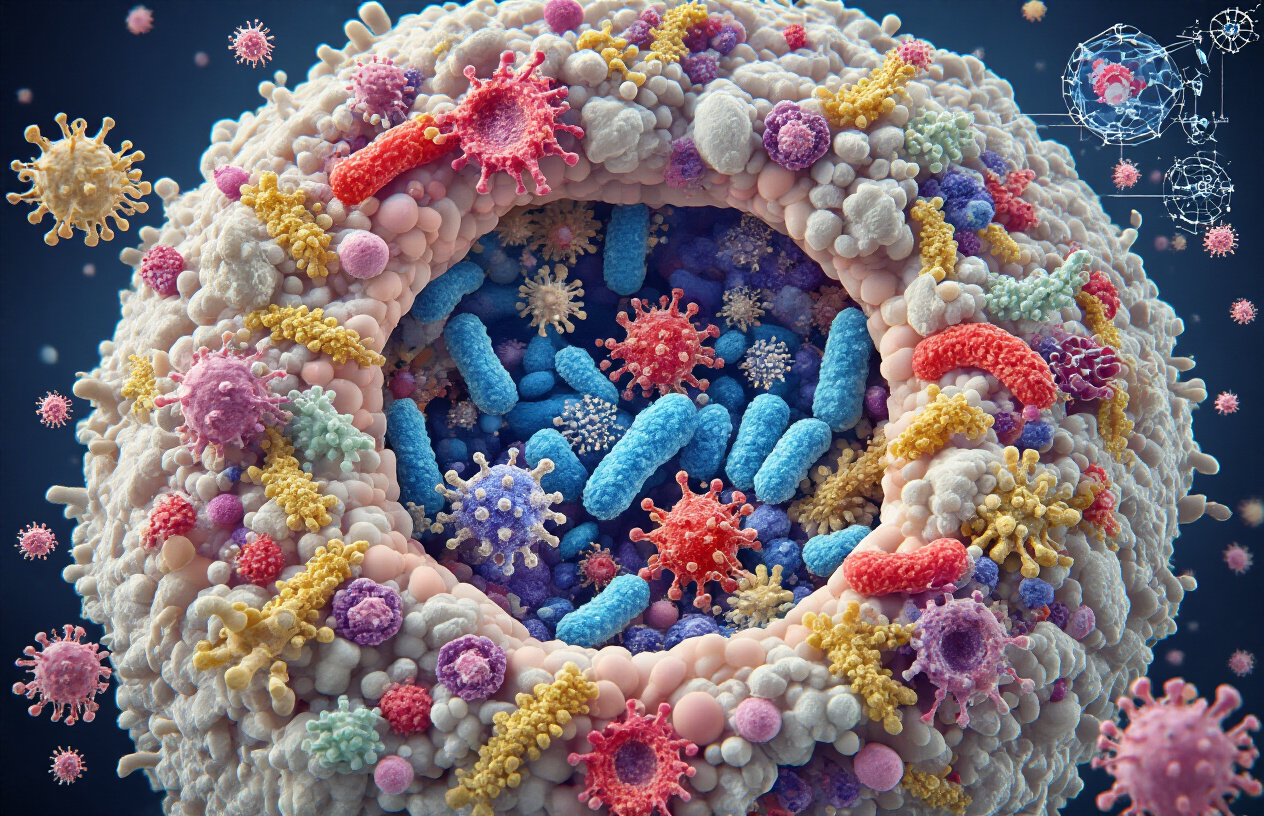
The Delicate Balance of Mouth Bacteria
The human mouth hosts over 700 species of bacteria at any given time. This complex ecosystem isn’t just randomly assembled—it’s a sophisticated community where different microorganisms play specific roles in maintaining oral health.
Think of the mouth as a bustling neighborhood. Some bacterial residents are friendly and contribute to community wellbeing, while others can cause trouble if their numbers grow unchecked. When this neighborhood stays in balance, everything runs smoothly. But when the balance tips, problems like bad breath can emerge.
What’s fascinating about this balance is how dynamic it remains throughout the day. Eating, drinking, medication use, and even stress can shift the bacterial population momentarily. The mouth’s microbiome can recover from these temporary changes, but persistent disruptions may lead to lasting imbalances.
Several factors influence this delicate equilibrium:
- Diet plays a crucial role—sugary foods feed harmful bacteria
- Hydration affects saliva production, which naturally cleanses the mouth
- Oral hygiene practices remove excessive bacterial buildup
- Medications, especially antibiotics, can disrupt the normal balance
- Age-related changes affect the composition of oral bacteria
When examining a healthy oral microbiome versus an imbalanced one, the differences become clear:
| Balanced Oral Microbiome | Imbalanced Oral Microbiome |
|---|---|
| Diverse bacterial species | Dominated by few species |
| Minimal volatile sulfur compounds | High levels of sulfur compounds (causing odor) |
| Neutral pH levels | More acidic environment |
| Strong tooth enamel | Weakened enamel vulnerable to decay |
| Pink, firm gums | Red, swollen, or bleeding gums |
The key isn’t eliminating all bacteria—that’s neither possible nor desirable. Rather, the goal should be nurturing the beneficial bacteria while keeping potentially harmful ones in check.
How Good Bacteria Protect Your Mouth
Beneficial bacteria serve as the first line of defense against potential pathogens entering through the mouth. These microscopic guardians work tirelessly to maintain oral health in multiple ways.
Primarily, good bacteria compete with harmful microbes for space and nutrients. By occupying strategic positions on teeth, gums, and tongue surfaces, beneficial bacteria prevent pathogens from establishing footholds. This competitive exclusion represents one of the most effective natural defense mechanisms.
Beyond just taking up space, beneficial oral bacteria actively create an environment hostile to harmful microbes. Many produce antimicrobial substances that directly inhibit the growth of pathogenic bacteria. These natural antibiotics help maintain the proper bacterial balance without harsh chemicals.
The protective functions of good oral bacteria include:
pH Regulation: Beneficial bacteria help maintain a neutral pH in the mouth. When pH levels drop too low (become acidic), tooth enamel begins to demineralize, leading to decay. Good bacteria counter this process by neutralizing acids.
Biofilm Management: Not all biofilms (bacterial communities attached to surfaces) are harmful. Beneficial bacteria form protective biofilms that strengthen the ecosystem against invasive pathogens.
Nitric Oxide Production: Certain oral bacteria convert dietary nitrates into nitric oxide, which improves blood flow to the gums and helps regulate blood pressure.
Immune System Education: Exposure to beneficial oral bacteria helps train the immune system to recognize which microbes pose threats and which are helpful allies.
Inflammation Control: Good bacteria help regulate inflammatory responses in the mouth, preventing excessive inflammation that can damage tissues.
Recent research has identified specific bacterial strains particularly beneficial for oral health:
- Streptococcus salivarius K12 and M18
- Lactobacillus reuteri
- Bifidobacterium bifidum
- Lactobacillus paracasei
These bacteria not only maintain balance but actively contribute to fresher breath. They accomplish this by crowding out the sulfur-producing bacteria responsible for bad breath and creating compounds that neutralize odor-causing substances.
The Root Causes of Bad Breath
Bad breath (halitosis) affects nearly everyone at some point, but chronic bad breath typically stems from specific causes rather than just what was consumed for lunch. Understanding these root causes is essential for effective treatment.
Microbial imbalance stands as the primary culprit behind persistent bad breath. When anaerobic bacteria—those thriving without oxygen—multiply excessively, particularly at the back of the tongue and between teeth, they produce volatile sulfur compounds (VSCs). These compounds create the characteristic unpleasant odor associated with bad breath.
The most common root causes include:
Bacterial Overgrowth: Certain bacteria species, including Porphyromonas gingivalis, Treponema denticola, and Tannerella forsythia, produce high levels of sulfur compounds when they dominate the oral environment.
Dry Mouth: Saliva naturally cleanses the mouth by washing away food particles and neutralizing acids. When saliva production decreases—due to medications, dehydration, or medical conditions—bacteria multiply unchecked, leading to bad breath.
Tongue Coating: The tongue’s surface contains numerous tiny papillae that can trap food particles and dead cells, creating a breeding ground for odor-producing bacteria. The back of the tongue, being less accessible during regular brushing, often harbors the highest concentration of these microbes.
Gum Disease: Periodontal issues create pockets between teeth and gums where bacteria thrive protected from oxygen and normal cleaning. These bacteria produce VSCs and other odorous compounds.
Systemic Conditions: Sometimes bad breath originates beyond the mouth. Conditions affecting the respiratory tract, digestive system, or metabolism can create distinctive breath odors:
| Condition | Breath Characteristic |
|---|---|
| Diabetes | Sweet or fruity odor |
| Kidney disease | Ammonia-like smell |
| Liver disease | Musty, sometimes described as “fishy” |
| Respiratory infections | Putrid smell from infected mucus |
| GERD/acid reflux | Sour odor from stomach acids |
Dietary Factors: While temporary, certain foods contribute significantly to breath odor. Garlic, onions, and spicy foods contain compounds that enter the bloodstream and are expelled through breathing, creating odor that brushing alone cannot eliminate.
Tobacco Use: Smoking and other tobacco products not only create their own distinctive odor but also dry the mouth and encourage growth of harmful bacteria.
The persistence of bad breath often depends on which of these factors is dominant. For instance, breath affected by food choices typically resolves within 24-72 hours as the body processes those compounds. However, breath issues stemming from microbial imbalances or gum disease require specific interventions targeting the bacterial ecosystem.
Importantly, conventional approaches like mouthwash often provide only temporary relief. Many antiseptic mouthwashes kill bacteria indiscriminately—eliminating beneficial bacteria along with harmful ones. This scorched-earth approach can actually worsen the problem over time as beneficial bacteria that would normally keep odor-producing bacteria in check are eliminated.
Addressing bad breath effectively requires restoring the proper microbial balance rather than simply masking odors or temporarily reducing all bacterial populations. This restoration approach works with the mouth’s natural ecology instead of against it.
The Science Behind Bacterial Balance

How Harmful Bacteria Create Odor
Bad breath doesn’t just appear out of nowhere – it’s manufactured by specific bacteria that call your mouth home. These tiny troublemakers feast on food particles, dead cells, and proteins in your mouth, breaking them down and releasing volatile sulfur compounds (VSCs) as waste products. These compounds are what create that distinctive unpleasant odor.
The main culprits behind bad breath are anaerobic bacteria – microorganisms that thrive without oxygen, typically hiding in areas like the back of your tongue, below the gum line, and between teeth. Some of the worst offenders include:
- Porphyromonas gingivalis – Not only contributes to bad breath but also plays a major role in gum disease
- Treponema denticola – Produces high levels of sulfur compounds that create that “rotten egg” smell
- Tannerella forsythia – Works alongside other bacteria to break down proteins and release foul odors
- Fusobacterium nucleatum – Acts as a bridge that helps other harmful bacteria colonize
These bacteria particularly love protein-rich environments. When they metabolize proteins, they release compounds like hydrogen sulfide, methyl mercaptan, and dimethyl sulfide – all chemicals that smell notoriously bad.
The problem gets worse when these bacteria form biofilms – sticky, protective communities where they can multiply safely away from oxygen and dental hygiene efforts. These biofilms create perfect breeding grounds for the bacteria that cause not only bad breath but also cavities and gum disease.
Beneficial Bacteria That Combat Bad Breath
Not all bacteria are enemies. The mouth naturally hosts hundreds of bacterial species, many of which actually help maintain oral health and fresh breath. These beneficial bacteria work by:
- Competing with harmful bacteria for space and nutrients
- Creating an environment hostile to odor-causing bacteria
- Producing compounds that neutralize bad odors
- Maintaining proper pH levels in the mouth
Some of the most effective good bacteria for combating bad breath include:
| Beneficial Bacteria | How It Helps Fight Bad Breath |
|---|---|
| Streptococcus salivarius K12 | Produces antimicrobial proteins called BLIS that inhibit growth of VSC-producing bacteria |
| Lactobacillus salivarius | Creates lactic acid that discourages harmful bacterial growth |
| Lactobacillus reuteri | Produces hydrogen peroxide that kills anaerobic bacteria |
| Weissella cibaria | Reduces volatile sulfur compounds through hydrogen peroxide production |
These beneficial bacteria create a balanced oral microbiome – the community of microorganisms living in the mouth. When this community maintains proper balance, harmful bacteria don’t get the chance to dominate and cause problems like bad breath.
The balance can be supported through probiotic supplements specifically designed for oral health, as well as through certain foods that naturally contain beneficial bacteria. Fermented foods like yogurt, kefir, and kimchi can introduce helpful bacterial strains into the oral environment.
Recent Research Breakthroughs
The field of oral microbiome research has exploded in recent years, bringing exciting new discoveries about fighting bad breath through bacterial balance.
A groundbreaking 2021 study published in the Journal of Oral Microbiology identified specific strains of Streptococcus salivarius that can reduce VSC production by up to 85% when introduced to the oral microbiome. This research has led to the development of targeted probiotic lozenges designed specifically to combat halitosis.
Another fascinating research direction involves bacteriophages – viruses that specifically target and destroy certain bacteria. Scientists at UCLA Dental School have identified phages that can eliminate P. gingivalis and other bad-breath-causing bacteria without harming beneficial species. This represents a potential revolution in treating bad breath at its source.
Researchers at Tokyo Medical and Dental University recently discovered that certain prebiotics – substances that feed beneficial bacteria – can dramatically alter the oral microbiome in favor of breath-freshening bacterial species. Their studies show that oligosaccharides derived from seaweed can increase populations of odor-neutralizing bacteria within just 14 days of regular use.
The relationship between diet and the oral microbiome has also been illuminated through new research. A 2022 study in the British Dental Journal revealed that a diet rich in polyphenols (compounds found in berries, green tea, and dark chocolate) promotes the growth of bacteria that inhibit VSC production.
Perhaps most exciting is the development of bacterial replacement therapy. Instead of just killing all bacteria with antiseptic mouthwashes, new treatments aim to introduce engineered beneficial bacteria that permanently colonize the mouth and prevent harmful species from establishing themselves.
The Microbial Ecosystem of a Healthy Mouth
The mouth is one of the most complex microbial environments in the human body, second only to the gut. A healthy oral microbiome contains approximately 700 different species of bacteria in a delicate ecological balance.
This ecosystem functions much like any natural environment – with predators and prey, competition for resources, and complex interdependencies. When this system remains balanced, oral health flourishes and breath stays fresh.
Key components of a healthy oral microbial ecosystem include:
- Diversity – A wide variety of bacterial species prevents any single harmful type from dominating
- Stability – Consistent conditions that allow beneficial communities to establish themselves
- Resilience – The ability to recover from disruptions like antibiotics or illness
- Proper pH balance – Slightly alkaline conditions that discourage acid-loving bacteria that cause decay
Different areas of the mouth host distinct microbial communities. The tongue, with its many grooves and crevices, harbors the highest bacterial concentration and diversity. The cheeks, hard palate, and saliva each maintain unique bacterial profiles. Even the spaces between teeth host specialized microbial communities.
Saliva plays a crucial role in maintaining this ecosystem. Beyond simply moistening the mouth, saliva contains minerals that strengthen teeth, enzymes that begin digestion, and proteins that regulate bacterial growth. Decreased saliva production, often caused by medications or certain health conditions, disrupts the oral microbiome and frequently leads to bad breath.
The relationship between the oral microbiome and overall health extends far beyond just fresh breath. Research has linked oral bacterial imbalances to conditions including heart disease, diabetes, Alzheimer’s disease, and pregnancy complications. This makes maintaining a healthy bacterial balance in the mouth essential not just for fresh breath, but for total body wellness.
Creating an environment where beneficial bacteria thrive requires a comprehensive approach that includes proper oral hygiene, diet, hydration, and sometimes probiotic supplementation. Traditional approaches that focus solely on killing bacteria with harsh antiseptics may actually worsen the problem by disrupting the natural balance and allowing harmful species to recolonize more quickly.
Natural Ways to Boost Good Bacteria
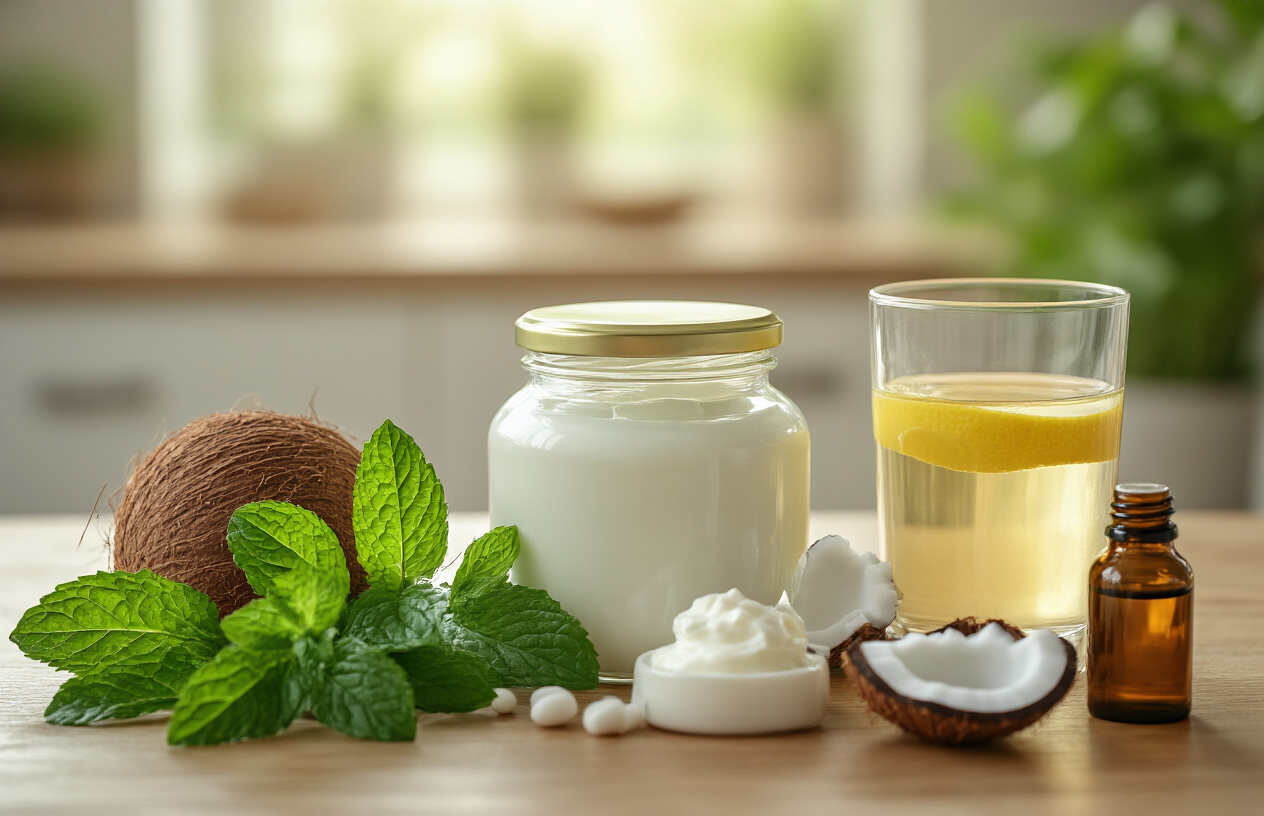
Probiotic-Rich Foods for Oral Health
Bad breath doesn’t stand a chance against the right oral bacteria. The mouth naturally hosts over 700 bacterial species, and maintaining the right balance is crucial for fresh breath and overall oral health.
Certain foods can directly boost beneficial bacteria in the mouth, creating an environment where odor-causing microbes struggle to survive. Here are some powerhouse options to incorporate into daily meals:
Yogurt tops the list of probiotic-rich foods for oral health. Studies show that consuming just 3 ounces of sugar-free yogurt daily reduces hydrogen sulfide—the compound responsible for that “rotten egg” breath smell—by up to 80%. Look for varieties containing Lactobacillus bulgaricus or Streptococcus thermophilus for maximum benefit.
Kefir delivers an even stronger probiotic punch than yogurt, containing up to 50 different strains of beneficial bacteria and yeasts. This fermented milk drink helps neutralize acidic environments where harmful bacteria thrive.
Raw cheese (particularly aged varieties like Gouda, cheddar, and Swiss) contains beneficial bacteria that survive the journey to the mouth and help combat unwanted microbes on the tongue and between teeth.
A morning routine that includes these probiotic foods can significantly reduce morning breath—that particularly strong bad breath many people experience upon waking.
Fermented Foods That Fight Bad Breath
Fermentation creates bacterial powerhouses that transform food while creating armies of beneficial microbes. These foods don’t just mask bad breath—they attack it at the source.
Kimchi might have a strong smell initially, but this Korean staple contains lactic acid bacteria that help eliminate the actual causes of bad breath. The compounds in kimchi’s garlic and cabbage support good bacteria growth while inhibiting harmful varieties.
Sauerkraut offers similar benefits through its fermentation process. The live cultures in unpasteurized sauerkraut help restore bacterial balance in the mouth. For best results, choose refrigerated varieties instead of shelf-stable options, which often have inactive bacteria due to pasteurization.
Kombucha provides both probiotic benefits and antimicrobial properties. This fermented tea contains acetic acid—the same compound found in vinegar—which can help eliminate harmful oral bacteria. Start with small amounts, as kombucha’s acidic nature requires some caution for dental health.
Miso delivers concentrated probiotic power. This fermented soybean paste contains Aspergillus oryzae, which studies suggest may help reduce volatile sulfur compounds in the mouth—the primary culprits behind persistent bad breath.
Tempeh offers a double benefit: its fermentation process creates probiotics, while its high protein content reduces mouth acidity. Less acidic environments make it harder for odor-causing bacteria to multiply.
Incorporating these foods doesn’t require overhauling your entire diet. Adding just one serving daily can make a noticeable difference in breath freshness within a week.
Dietary Changes That Support Oral Microbiome
Beyond specific probiotic foods, broader dietary patterns significantly impact the mouth’s bacterial ecosystem. Making strategic adjustments creates an environment where beneficial bacteria flourish and malodorous microbes struggle.
Reduce sugar consumption to starve harmful bacteria. Sugar-loving bacteria produce acids that not only damage teeth but create volatile compounds that contribute to bad breath. Cutting sugar intake by even 25% can shift the oral microbiome toward a healthier balance within days.
Increase fiber intake through vegetables, fruits, and whole grains. Fiber acts as a natural toothbrush, mechanically removing bacteria as you chew. Additionally, fiber serves as prebiotic fuel for beneficial bacteria, helping them outcompete harmful strains.
Choose alkaline foods to neutralize mouth acidity. Options like leafy greens, root vegetables, and nuts create an oral environment where odor-causing bacteria struggle to survive. The ideal diet should be approximately 70% alkaline foods for optimal oral bacterial balance.
Incorporate polyphenol-rich foods like berries, green tea, and dark chocolate. These compounds inhibit the growth of pathogenic bacteria while supporting beneficial strains. Research shows green tea polyphenols specifically target the bacteria responsible for producing volatile sulfur compounds.
Stay hydrated to maintain saliva production. Saliva contains proteins and minerals that naturally regulate oral bacteria populations. Even mild dehydration reduces these protective effects and creates opportunities for bad-breath bacteria to proliferate.
This table summarizes key dietary adjustments and their effects on the oral microbiome:
| Dietary Change | Impact on Oral Bacteria | Foods to Include |
|---|---|---|
| Reduce Sugar | Decreases acid-producing bacteria | Replace sweets with fruits, use xylitol |
| Increase Fiber | Mechanically removes bacteria, feeds beneficial strains | Apples, celery, whole grains |
| Choose Alkaline Foods | Creates hostile environment for odor-causing bacteria | Spinach, broccoli, almonds |
| Add Polyphenols | Inhibits pathogenic bacteria growth | Berries, green tea, dark chocolate |
| Increase Hydration | Supports protective saliva production | Water, herbal teas |
Consistency matters more than perfection with these dietary changes. Small, sustainable adjustments yield better long-term results than dramatic but temporary diet overhauls.
Timing also impacts effectiveness. Consuming probiotic foods earlier in the day maximizes their residence time in the mouth. Ending meals with alkaline foods helps neutralize acids produced during eating.
The mouth’s microbiome can shift remarkably quickly—positive changes often become noticeable within 48-72 hours of dietary adjustments. This rapid response makes dietary intervention one of the most effective natural approaches to combating bad breath.
While commercial mouthwashes offer temporary relief by killing bacteria indiscriminately, dietary approaches foster a balanced microbiome that self-regulates and naturally prevents bad breath. This sustainable solution addresses the root cause rather than temporarily masking symptoms.
Probiotic Solutions for Fresh Breath
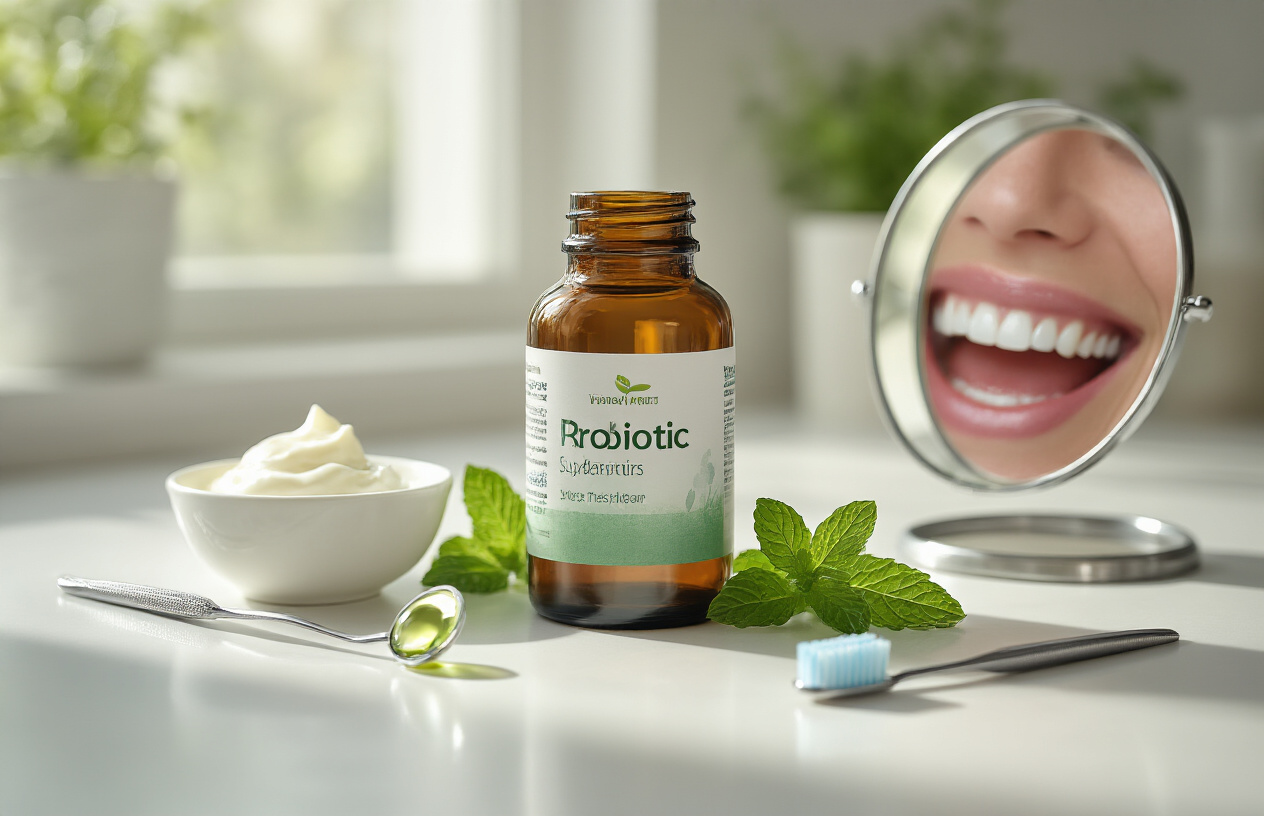
A. Types of Oral Probiotic Supplements
Oral probiotics come in several forms, each designed to deliver beneficial bacteria to rebalance the mouth’s microbiome and fight bad breath at its source.
The most common types include:
Lozenges and Tablets
These slowly dissolve in the mouth, allowing beneficial bacteria to colonize oral tissues. They typically contain strains like Streptococcus salivarius K12 or M18, specifically selected for their ability to inhibit the growth of sulfur-producing bacteria.
Chewable Tablets
Similar to lozenges but with a different delivery mechanism. Chewing breaks down the tablet and spreads the probiotics throughout the mouth before swallowing.
Probiotic Mints
These combine breath-freshening flavors with live bacterial cultures – a two-in-one approach that provides immediate breath freshening while delivering long-term microbial benefits.
Oral Probiotic Powders
These can be dissolved in water or sprinkled on the tongue, providing a versatile option for those who don’t prefer lozenges.
Probiotic Mouth Rinses
Liquid formulations that can reach areas between teeth and along the gum line that other formats might miss.
Probiotic Gums
Chewing gum formulations that combine the mechanical cleaning action of chewing with probiotic delivery.
The bacterial strains matter tremendously. Look for products containing:
- Streptococcus salivarius K12 (targets throat and mouth odor)
- Streptococcus salivarius M18 (focuses on dental health)
- Lactobacillus reuteri (helps with gum health)
- Bifidobacterium bifidum (supports overall oral ecology)
Each format has distinct advantages depending on individual preferences and specific oral health needs.
B. How to Choose the Right Probiotic Product
Selecting an effective oral probiotic requires attention to several key factors:
Strain Specificity
Not all probiotics work for oral health. Products should contain strains specifically researched for mouth and throat benefits, not just digestive strains repurposed for oral use.
Colony Forming Units (CFUs)
A good oral probiotic should contain at least 1 billion CFUs per dose. This number represents the viable bacteria that can reproduce and form colonies in the mouth.
Survival Technology
Check whether the product uses technology to protect bacteria through the manufacturing and storage process. Microencapsulation, for example, shields probiotics until they reach their target destination.
Storage Requirements
Some probiotic products require refrigeration to maintain potency, while others are shelf-stable. Choose based on lifestyle and convenience factors.
Additives and Ingredients
Avoid products with high sugar content, as sugar feeds harmful bacteria. Also check for potential allergens or unnecessary fillers.
Clinical Evidence
The gold standard: Look for products backed by peer-reviewed clinical studies showing effectiveness specifically for bad breath or oral health.
Price vs. Value
Higher price doesn’t always mean better quality. Compare CFU count, strain types, and stability technology across price points.
Expiration Dates
Probiotics are living organisms. Always check expiration dates and avoid expired products, as potency significantly diminishes over time.
A quality oral probiotic will clearly state:
- Exact strains (not just general species names)
- Precise CFU count
- Manufacturing date and expiration information
- Clear dosage instructions
- Storage recommendations
The best approach is to start with products containing well-researched strains like S. salivarius K12, which has substantial evidence supporting its effectiveness against halitosis.
C. Probiotic Lozenges vs. Rinses
Both lozenges and rinses deliver probiotics to the oral cavity, but they work differently and offer distinct advantages.
Probiotic Lozenges
The slow-dissolve action of lozenges creates prolonged contact between beneficial bacteria and oral tissues. This extended exposure time increases colonization potential.
Key benefits include:
- Targeted delivery to specific areas (can be moved around the mouth)
- Higher concentration of probiotics in a single dose
- Portable and discreet usage
- Generally longer shelf life without refrigeration
- Often contain additional beneficial ingredients like zinc or xylitol
The main drawback is duration – lozenges must dissolve completely for maximum benefit, requiring 5-10 minutes of time.
Probiotic Rinses
Rinses provide comprehensive coverage, reaching areas that lozenges might miss, including deep between teeth and far back in the throat.
Advantages include:
- Even distribution throughout the entire oral cavity
- Quick application (usually 30-60 seconds of rinsing)
- Can reach periodontal pockets and interdental spaces
- Often combine probiotics with other beneficial ingredients
- May be more comfortable for those with texture sensitivities
However, rinses typically provide shorter contact time with oral tissues and may contain fewer CFUs per dose than lozenges.
Effectiveness Comparison
| Factor | Lozenges | Rinses |
|---|---|---|
| Contact Time | Longer (5-10 min) | Shorter (30-60 sec) |
| Coverage Area | Focused | Comprehensive |
| Bacterial Concentration | Higher | Lower |
| Convenience | Requires time to dissolve | Quick application |
| Portability | High | Moderate |
| Typical CFU Count | 1-10 billion per lozenge | 100 million – 1 billion per use |
For optimal results, consider using both formats: rinses for comprehensive cleaning and lozenges for targeted probiotic delivery. Many dental professionals recommend using rinses in the morning and lozenges before bed for continuous protection.
D. Expected Timeline for Results
Results from oral probiotics vary based on individual factors, but understanding typical timelines helps manage expectations.
Short-term (1-7 days)
Within the first week, subtle changes may begin. Many users notice mild improvements in morning breath, but significant halitosis reduction typically takes longer. The mouth might feel slightly different as the bacterial balance begins shifting.
Medium-term (1-4 weeks)
This is when most people experience noticeable improvements. Research shows that for many individuals, significant bad breath reduction occurs around the 2-week mark. By 3-4 weeks, the new beneficial bacteria have established stronger colonies, creating more consistent results.
Long-term (1-3 months and beyond)
Full colonization and stabilization of the oral microbiome typically takes at least a month of consistent use. At this stage, the benefits become more stable and less dependent on daily supplementation, though continued use is recommended for maintenance.
Factors Affecting Timeline
Several variables influence how quickly results appear:
- Current Oral Microbiome Composition: Those with severe imbalances may require longer treatment.
- Consistency of Use: Daily, uninterrupted use produces faster results.
- Complementary Habits: Reducing sugar, proper brushing, and flossing accelerate positive changes.
- Probiotic Strain and Potency: Higher CFU counts and specific strains like S. salivarius K12 may work faster.
- Underlying Causes: If bad breath stems from conditions like GERD or sinus infections, probiotics alone may take longer or provide limited results.
Important Considerations
Some people experience a temporary increase in bad breath during the first few days as the microbial environment shifts – this “die-off” phase is normal and typically resolves quickly.
For persistent bad breath that shows no improvement after 4-6 weeks of probiotic therapy, consult a healthcare professional to investigate other potential causes.
E. Combining Probiotics with Traditional Oral Care
The most effective approach to fresh breath integrates probiotics with conventional oral hygiene practices, creating a comprehensive strategy.
Optimal Daily Routine
Morning:
- Tongue cleaning to remove overnight bacterial buildup
- Brushing with a non-antibacterial toothpaste (to avoid killing beneficial bacteria)
- Flossing to remove interdental food particles
- Probiotic rinse as the final step
Evening:
- Thorough brushing and flossing
- Tongue cleaning
- Probiotic lozenge before bed (when saliva flow naturally decreases)
Synergistic Products
Certain traditional oral care products work particularly well with probiotics:
- Xylitol-containing products: Xylitol reduces harmful bacterial adhesion while not affecting beneficial strains.
- Zinc-fortified rinses: Zinc helps neutralize volatile sulfur compounds while probiotics address the source.
- Alcohol-free mouthwashes: Alcohol can reduce probiotic viability.
- Mild, non-SLS toothpastes: Gentler formulations preserve the oral microbiome.
Timing Considerations
To maximize effectiveness, separate antibacterial mouthwashes from probiotic use by at least 30 minutes. Using traditional antimicrobial rinses immediately before probiotics can significantly reduce their effectiveness.
Professional Dental Care
Regular dental cleanings remain essential even with probiotic use. Professional recommendations:
- Maintain 6-month cleaning schedule
- Inform dental professionals about probiotic regimen
- Consider professional application of probiotic products during dental visits
Addressing Specific Issues
For targeted concerns, combine probiotics with:
- Dry mouth: Xylitol lozenges plus oral probiotics
- Gum inflammation: CoQ10 supplements and probiotics with L. reuteri
- Post-antibiotic care: Increased probiotic dosage temporarily
- Chronic tonsil stones: Probiotic rinses with targeted gargling
The balanced approach respects the importance of removing harmful bacterial buildup through mechanical cleaning while supporting the establishment of beneficial bacterial communities. This creates an environment where good bacteria can thrive and bad breath-causing microbes struggle to gain dominance.
Daily Habits That Support Your Oral Microbiome
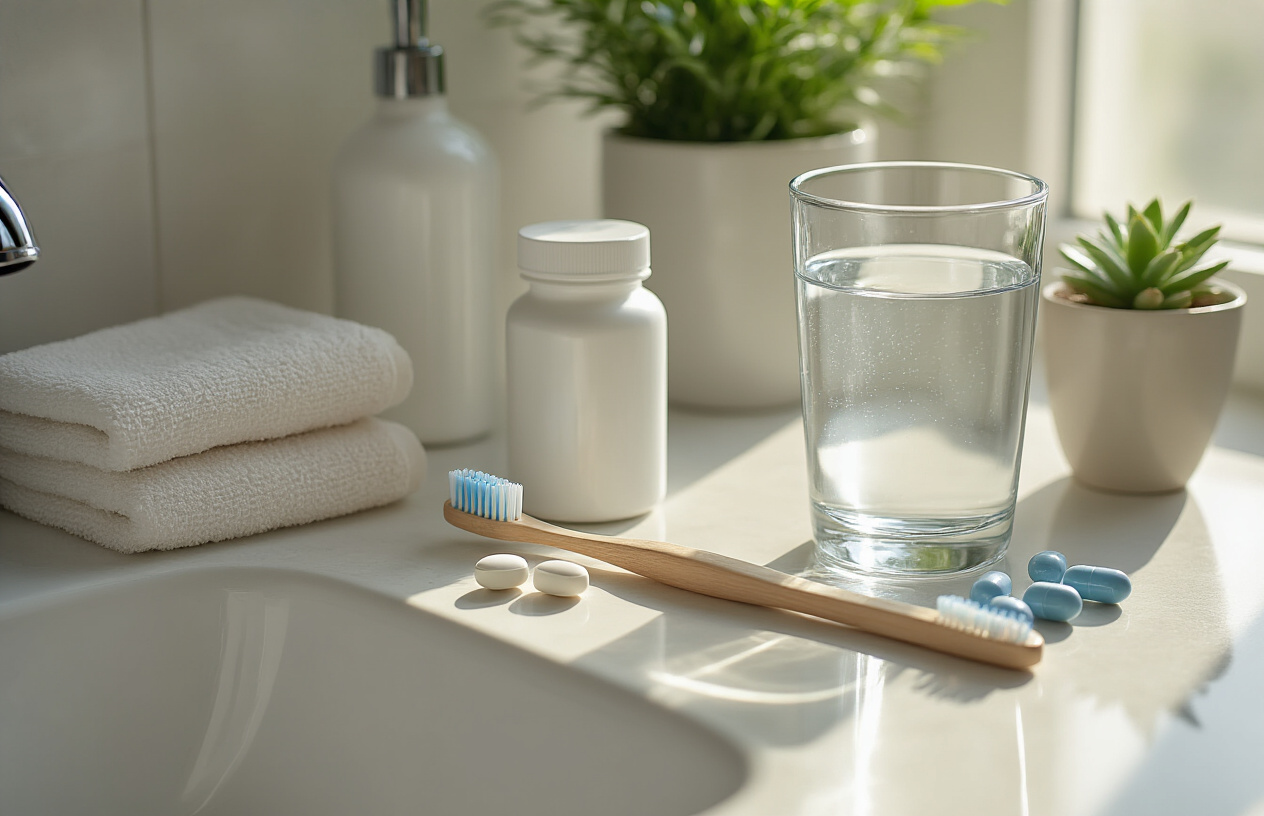
A. Brushing Techniques That Preserve Good Bacteria
The mouth is home to hundreds of bacterial species – some friendly, some not so much. Traditional brushing advice often focuses on eliminating bacteria completely, but modern science reveals this scorched-earth approach might be causing more harm than good.
Smart brushing means targeting the bad actors while preserving the beneficial bacteria that fight bad breath naturally. Here’s how:
Ditch the harsh antimicrobial toothpastes. Many commercial toothpastes contain triclosan or chlorhexidine that kill bacteria indiscriminately. Instead, opt for gentler formulations with natural antibacterials like tea tree oil or neem that target harmful bacteria while being kinder to beneficial strains.
Brush correctly, not harder. Aggressive brushing damages gums and disrupts the delicate oral ecosystem. Use a soft-bristled brush and gentle circular motions. The goal is removing food particles and plaque, not scrubbing enamel away.
Timing matters. Wait 30-45 minutes after eating before brushing, especially after acidic foods or drinks. This gives saliva time to neutralize acids and allows beneficial bacteria to process food particles that might otherwise become fuel for bad-breath causing microbes.
The two-minute rule is real. Most people brush for less than 60 seconds, but proper bacterial management requires a full two minutes. Divide the mouth into quadrants and spend 30 seconds on each.
Replace your toothbrush regularly. An old toothbrush becomes a breeding ground for the wrong kinds of bacteria. Switch to a new one every 3-4 months, or sooner if bristles are frayed.
Consider bass brushing technique. This method positions bristles at a 45-degree angle toward the gumline and uses gentle vibrating motions. Studies show this approach effectively removes plaque while being gentler on the oral microbiome.
This simple shift in brushing philosophy supports the mouth’s natural defenses against bad breath rather than temporarily masking symptoms while potentially making the problem worse long-term.
B. Natural Rinses That Encourage Bacterial Balance
Commercial mouthwashes often contain alcohol or harsh antimicrobials that nuke everything in sight—including the beneficial bacteria needed for fresh breath. Natural alternatives can target bad breath bacteria while supporting microbial diversity.
Salt water rinse: The simplest solution often works best. A warm salt water rinse (1/2 teaspoon salt in 8 oz warm water) creates an alkaline environment that discourages harmful bacterial growth while being gentle on beneficial flora. Swish for 30 seconds after meals.
Diluted hydrogen peroxide: A 1:1 mixture of 3% hydrogen peroxide and water creates an oxygenating rinse that targets anaerobic bacteria—the primary culprits behind bad breath. These bacteria hate oxygen, making this an effective targeted approach. Use no more than twice weekly to avoid disrupting the natural balance.
Probiotic rinses: Emerging research supports the use of probiotic rinses containing beneficial bacteria strains like Lactobacillus and Bifidobacterium. These friendly reinforcements help crowd out odor-causing bacteria while strengthening the oral ecosystem.
Herbal infusions work wonders:
- Sage tea rinse: Sage contains natural compounds that reduce bacterial growth while providing a pleasant flavor. Brew a strong cup, let cool, and use as a mouth rinse.
- Cinnamon water: Simmer a cinnamon stick in water for 5 minutes, cool, and rinse. Cinnamon contains cinnamic aldehyde, which fights bacteria responsible for bad breath.
- Green tea rinse: Green tea is rich in polyphenols that inhibit the growth of bacteria causing bad breath. Brew, cool, and swish after meals.
Oil pulling: This ancient technique involves swishing oil (coconut or sesame work best) in the mouth for 10-15 minutes. The oil traps bacteria and their toxins, which are then spit out. Studies show oil pulling significantly reduces bad breath-causing bacteria while preserving beneficial flora.
Baking soda rinse: A teaspoon of baking soda dissolved in warm water creates an alkaline environment hostile to odor-causing bacteria. Use once daily for best results.
What makes these natural options superior to commercial rinses is their targeted approach. Rather than disrupting the entire oral ecosystem, they work with the body’s natural mechanisms to restore balance.
C. Foods to Avoid That Disrupt Oral Flora
What goes into the mouth dramatically impacts which bacteria thrive there. Some foods create the perfect storm for bad breath by feeding harmful bacteria or creating an environment where they flourish.
Sugar is bacterial fuel. Harmful bacteria feast on sugars and refined carbohydrates, multiplying rapidly and producing volatile sulfur compounds that cause bad breath. Limiting intake of candy, sodas, and processed foods starves these troublemakers while giving beneficial bacteria a competitive advantage.
Acidic foods disrupt balance. Highly acidic foods and beverages like citrus juices, coffee, and tomato sauce can lower mouth pH, creating an environment where harmful bacteria thrive while beneficial strains struggle. This doesn’t mean eliminating these foods entirely—just being mindful of frequency and rinsing afterward with water.
Alcohol dries the mouth. Alcoholic beverages reduce saliva production, creating a dry environment where odor-causing bacteria flourish without saliva’s natural cleansing action. The same applies to alcohol-containing mouthwashes, which provide temporary fresh breath at the cost of worse breath later.
Dairy products feed sulfur-producing bacteria. For some people, high-protein dairy products leave amino acid residues that sulfur-producing bacteria convert to volatile compounds with distinctive unpleasant odors.
Processed foods lack the nutrients beneficial bacteria need to thrive. A diet heavy in packaged foods and light on whole foods creates an imbalanced oral microbiome where bad breath bacteria gain the upper hand.
Garlic and onions contain compounds that enter the bloodstream and travel to the lungs, where they’re exhaled—a form of bad breath no amount of brushing can immediately fix. This effect comes from within and can last up to 24 hours.
Watch out for hidden disruptors:
| Food Category | Harmful Effect | Better Alternative |
|---|---|---|
| White bread | Breaks down into simple sugars, feeding harmful bacteria | Whole grain breads with seeds |
| Dried fruits | Concentrated sugars stick to teeth, fueling bad bacteria | Fresh fruits with high water content |
| Protein bars | Often contain hidden sugars and sticky textures | Nuts or fresh fruit with nut butter |
| Breath mints | Sugar-laden versions feed the very bacteria causing bad breath | Sugar-free mints with xylitol (which inhibits harmful bacteria) |
| Diet sodas | Acidic nature disrupts oral pH | Herbal teas or water infused with cucumber |
The ideal diet for oral bacterial balance emphasizes fiber-rich vegetables, which act as prebiotics feeding beneficial bacteria, lean proteins, healthy fats, and minimal processed foods. This approach not only supports fresh breath but contributes to overall health.
Strategic food timing also matters. Eating smaller, more frequent meals prevents the hunger-induced dry mouth that creates a breeding ground for odor-causing bacteria. Finishing meals with crunchy vegetables like celery or apple slices helps naturally clean teeth while stimulating saliva production.
The key takeaway is that dietary choices represent one of the most powerful tools for maintaining a balanced oral microbiome and preventing bad breath at its source, rather than temporarily masking symptoms.
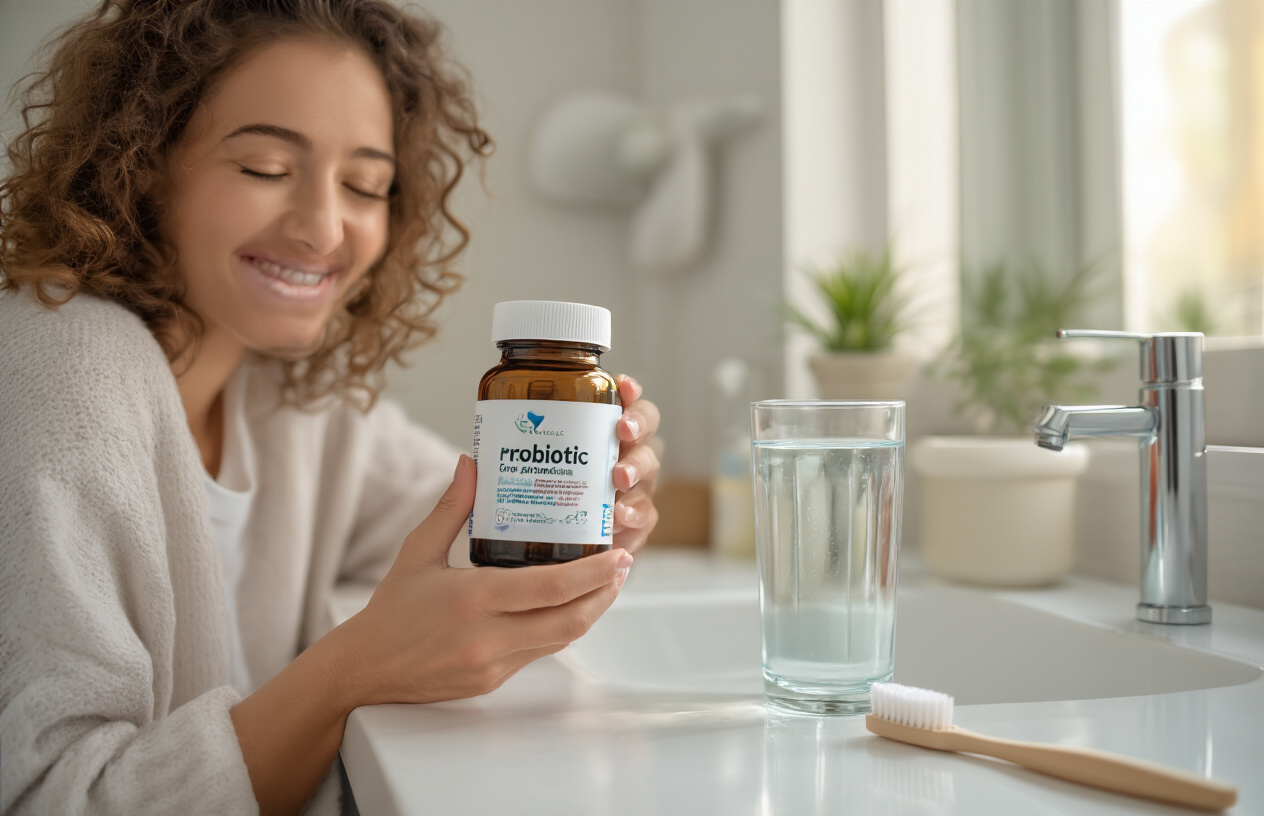
Maintaining fresh breath goes beyond masking odors with mints and mouthwash—it requires nurturing the delicate ecosystem of bacteria in your mouth. By understanding your oral microbiome and working to balance beneficial bacteria, you can address the root cause of bad breath rather than just treating symptoms. Incorporating natural boosters like fibrous foods, staying hydrated, and considering probiotic solutions can significantly improve your oral health environment.
Your daily habits play a crucial role in supporting these good bacteria. By implementing consistent oral hygiene practices, choosing the right products, and being mindful of what you consume, you’re not just fighting bad breath—you’re promoting overall oral health. Remember that fresh breath starts with a balanced microbiome, and with these strategies, you can cultivate a healthier mouth from the inside out.